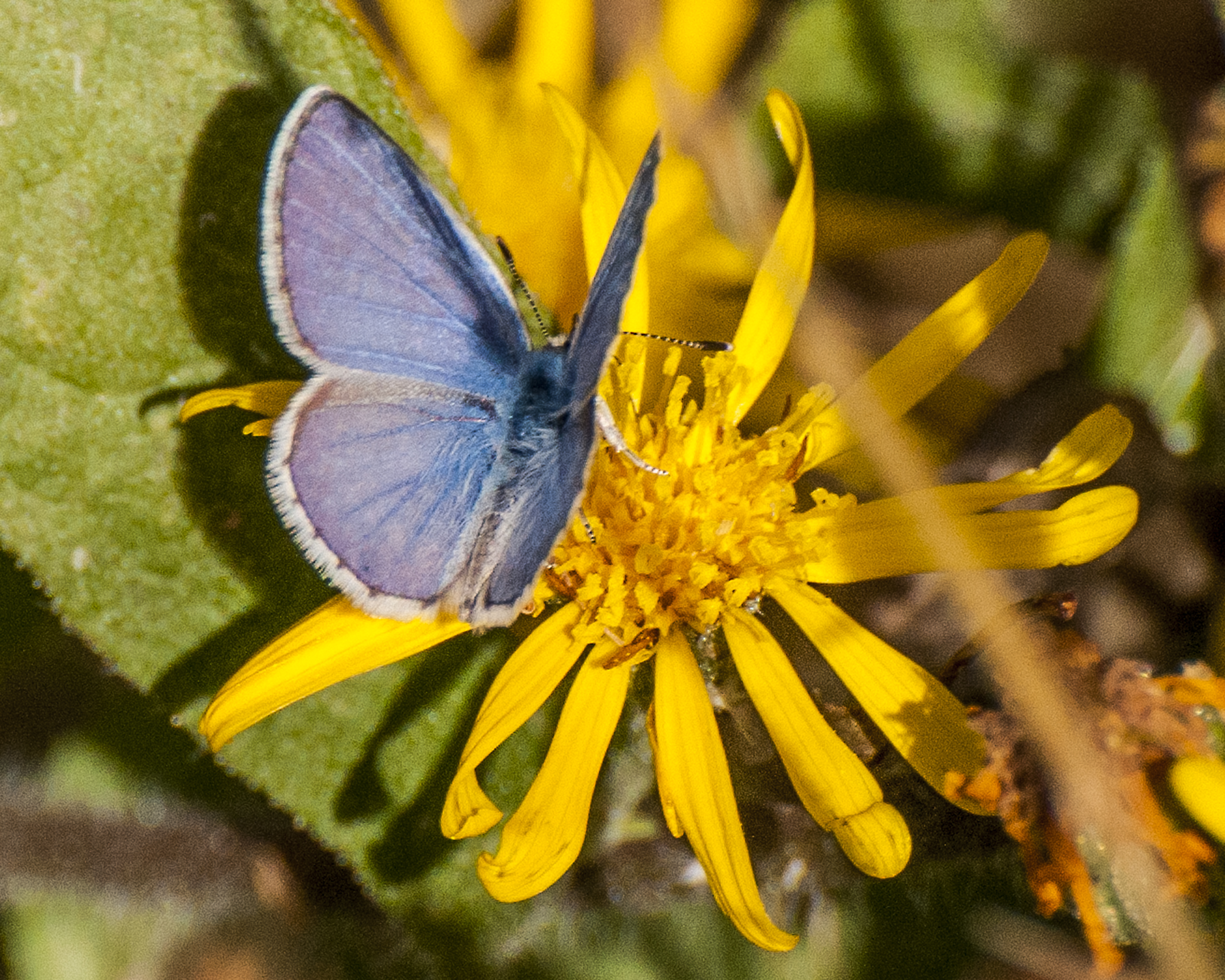Lycaenidae is the second-largest family of butterflies (behind Nymphalidae, brush-footed butterflies), with over 6,000 species worldwide. They constitute about 30% of the known butterfly species. Adult individuals often have hairy antenna-like tails complete with black and white annulated (ringed) appearance. Many species also have a spot at the base of the tail and some turn around upon landing to confuse potential predators from recognizing the true head orientation. This causes predators to approach from the true head end resulting in early visual detection. Lycaenids are diverse in their food habits and apart from phytophagy, some of them are entomophagous feeding on aphids, scale insects, and ant larvae. Some lycaenids even exploit their association with ants by inducing ants to feed them by regurgitation, a process called trophallaxis. Not all lycaenid butterflies need ants, but about 75% of species associate with ants, a relationship called myrmecophily. These associations can be mutualistic, parasitic, or predatory depending on the species. In some species, larvae are attended and protected by ants while feeding on the host plant, and the ants receive sugar-rich honeydew from them, throughout the larval life, and in some species during the pupal stage.
Identification: Upperside of male light blue with a darker narrow border; female dark brown, often with wing bases blue. Underside gray; both wings with a row of dark postmedian dashes. Florida butterflies have one submarginal eyespot on hindwing; Southwest butterflies have two. Wing Span: 3/4 - 1 1/8 inches (2 - 3 cm). Life History: Males patrol during warm hours of the day for receptive females. Eggs are laid singly on flower buds or leaves of host plant; caterpillars feed on flowers and seedpods. Flight: Throughout the year in Texas and south Florida, late summer in other parts of its range. Caterpillar Hosts: A variety of woody legumes including partridge pea (Cassia brachiata), mesquite (Prosopis species), and rosary pea (Abrus precatorius). Adult Food: Flower nectar. Habitat: Open woodland, desert scrub, dunes, pastures, road edges, and vacant lots. Range: U. S. Southwest, South Texas, Florida and the Keys south through the West Indies, Mexico, and Central America to South America. Strays to North Carolina, Missouri, Kansas, and Nevada.
Sabino Canyon
Main Tram Road.
Location: On creosote flower 0.25 mi from visitor center.
10/31/21
Notes: The identification of the species between Ceraunus and Reakirt's of the open-winged images is not reliable since the underwing surface was not directly observed but the sex assignments are correct (Fred Heath). Many C. Blue were seen in the immediate area of the Smartweed but no R. Blue.
Notes 2: Additional open and closed wing images of another specimen on Camphorweed show the same pattern with a thin dark border on upper surface of wing. Confirms the identification of the indeterminate open wing images above as Ceraunus Blue. Reakirt's Blue described as having indistinct border marking on upper wings.
See Butterflies and Moths of North America Pictures and Description


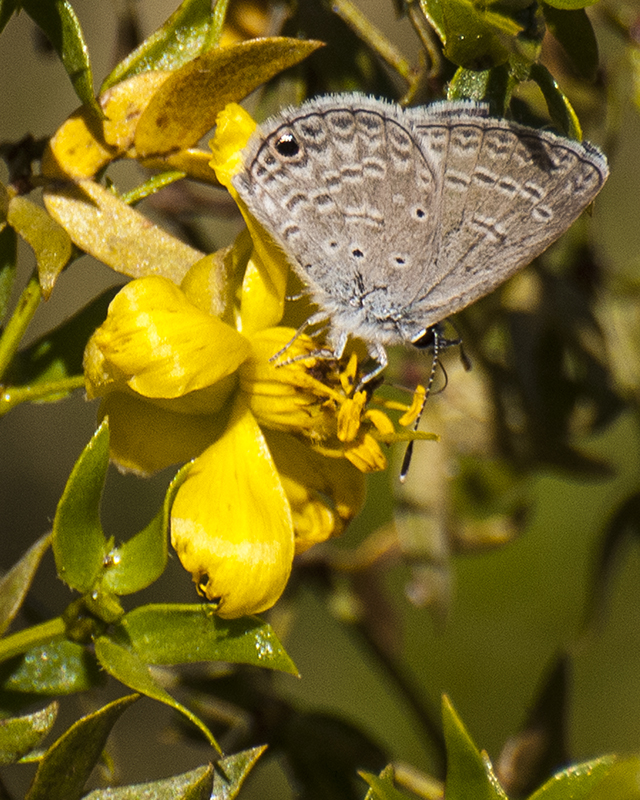 Sabino Canyon above dam on Smartweed 12/16/21
Sabino Canyon above dam on Smartweed 12/16/21
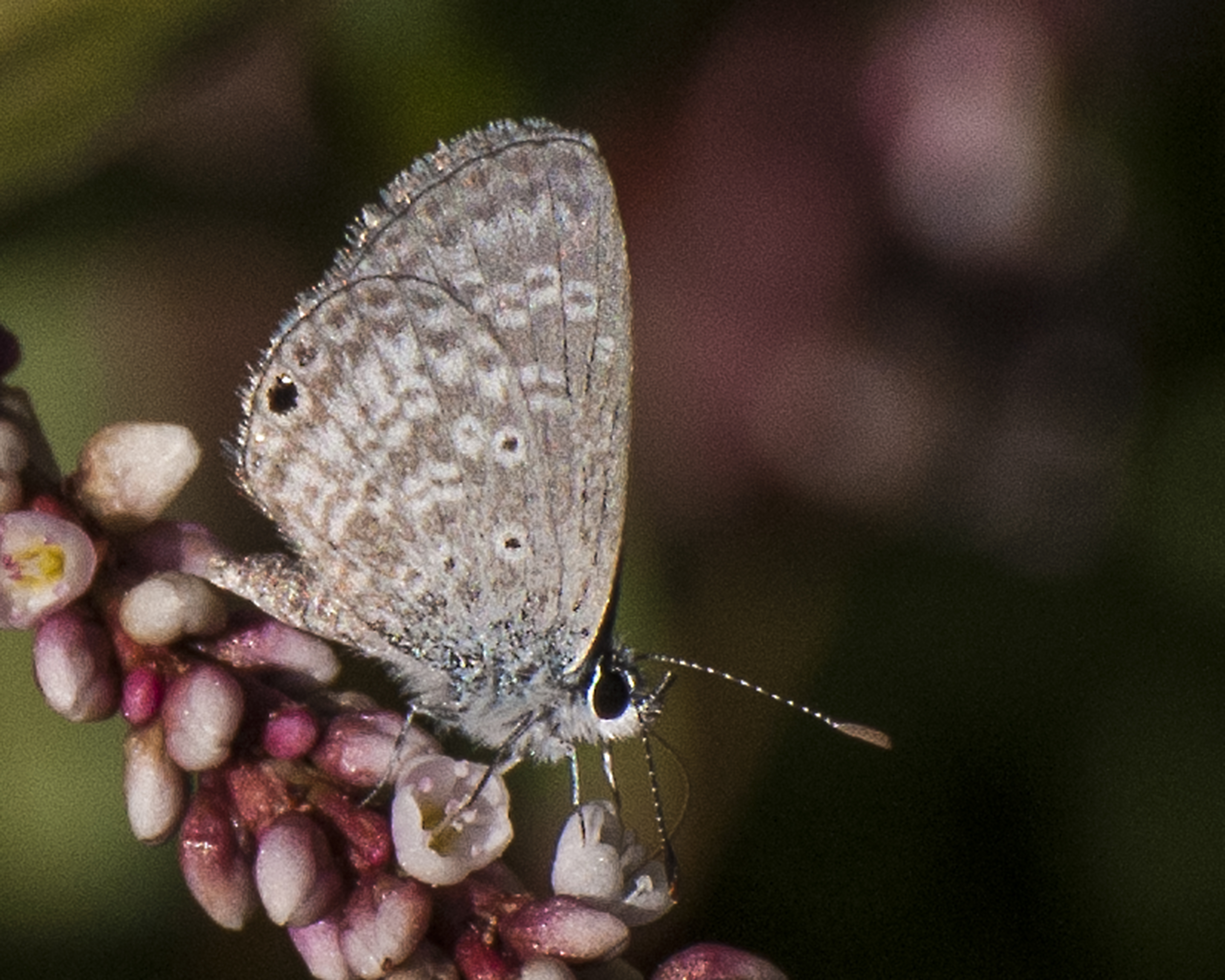 Male Sabino Canyon above dam on Smartweed 12/16/21
Male Sabino Canyon above dam on Smartweed 12/16/21
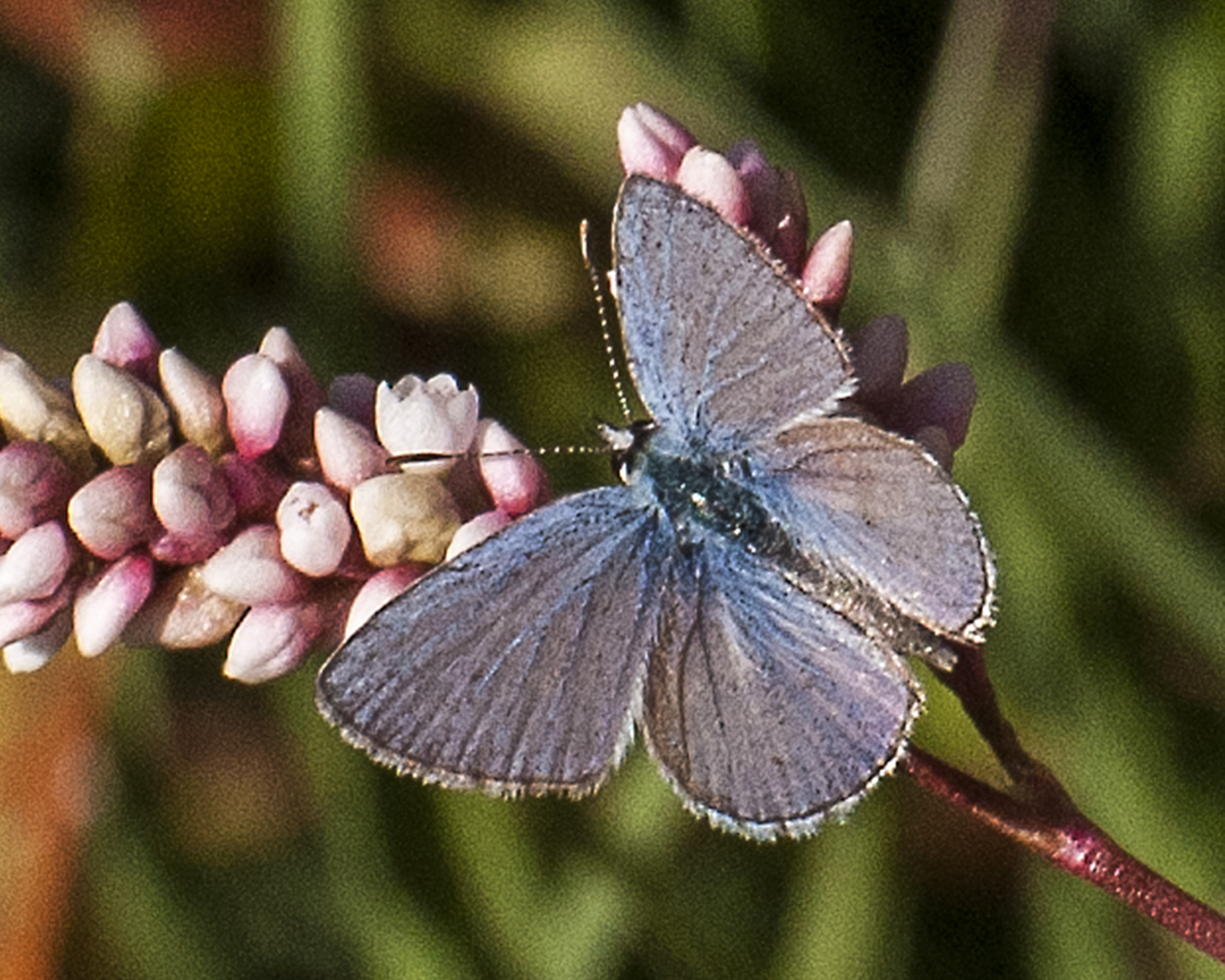 Female Sabino Canyon above dam on Smartweed 12/16/21
Female Sabino Canyon above dam on Smartweed 12/16/21
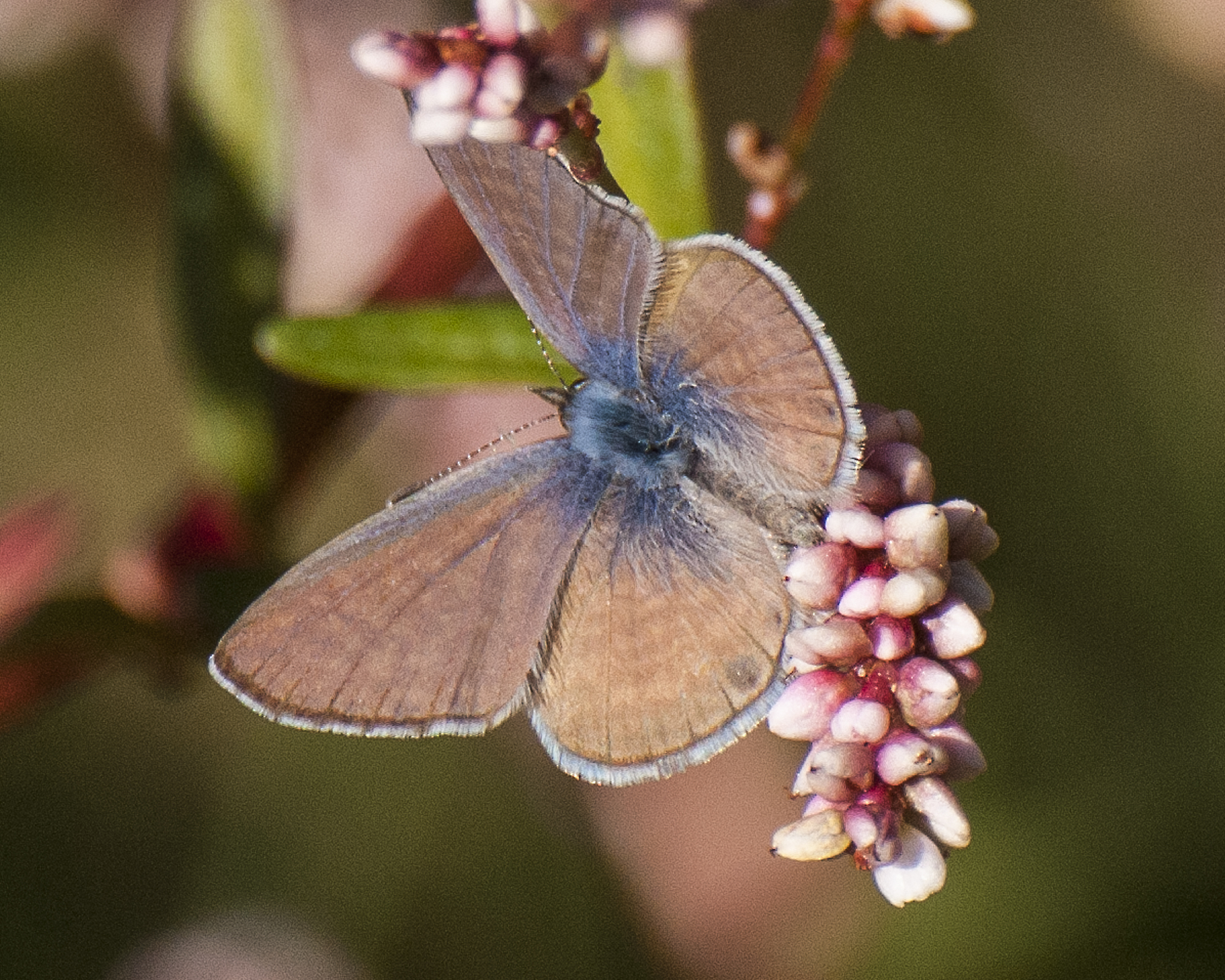 Male on Camphorweed 12/26/21
Male on Camphorweed 12/26/21
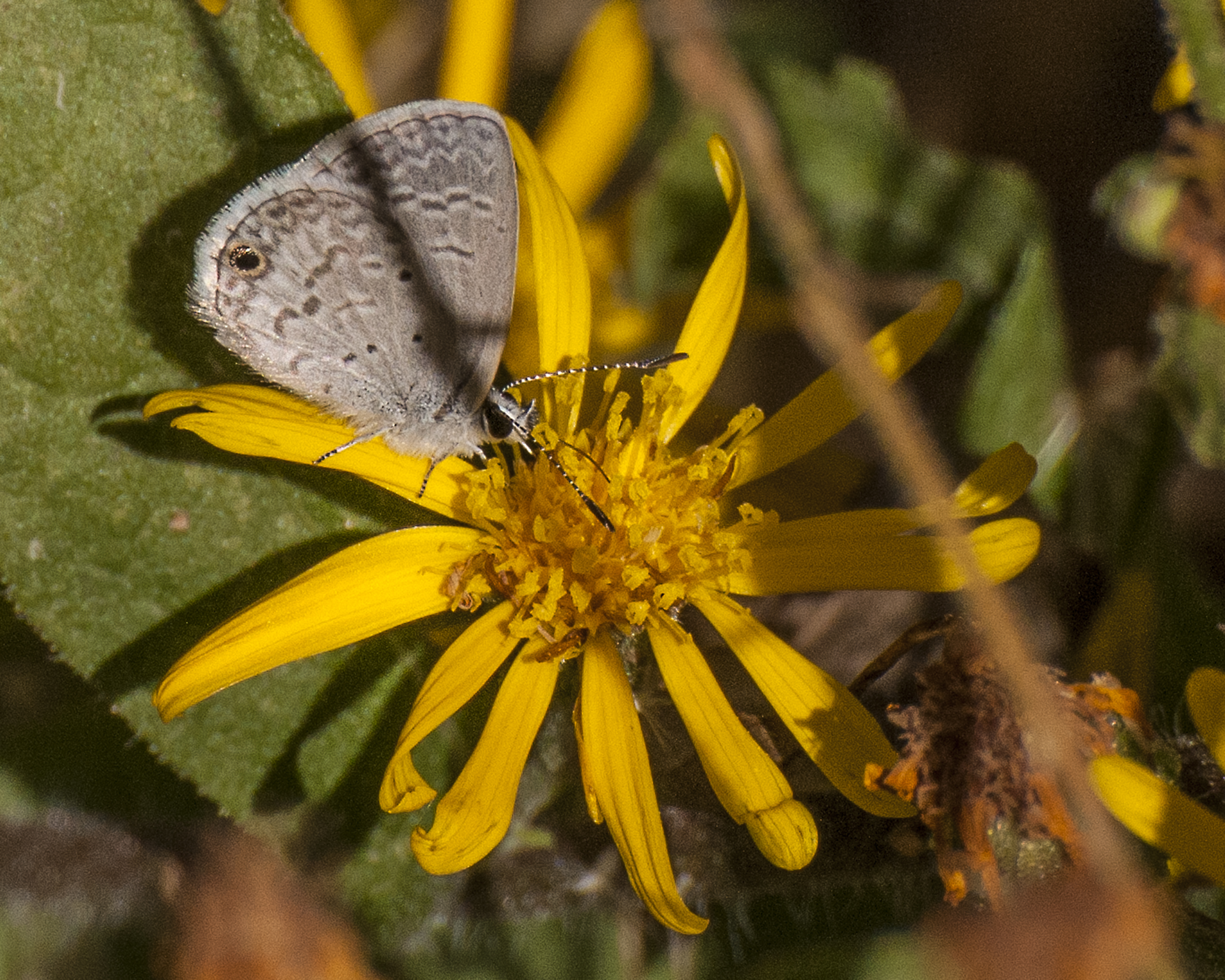 Male on Camphorweed 12/26/21
Male on Camphorweed 12/26/21
